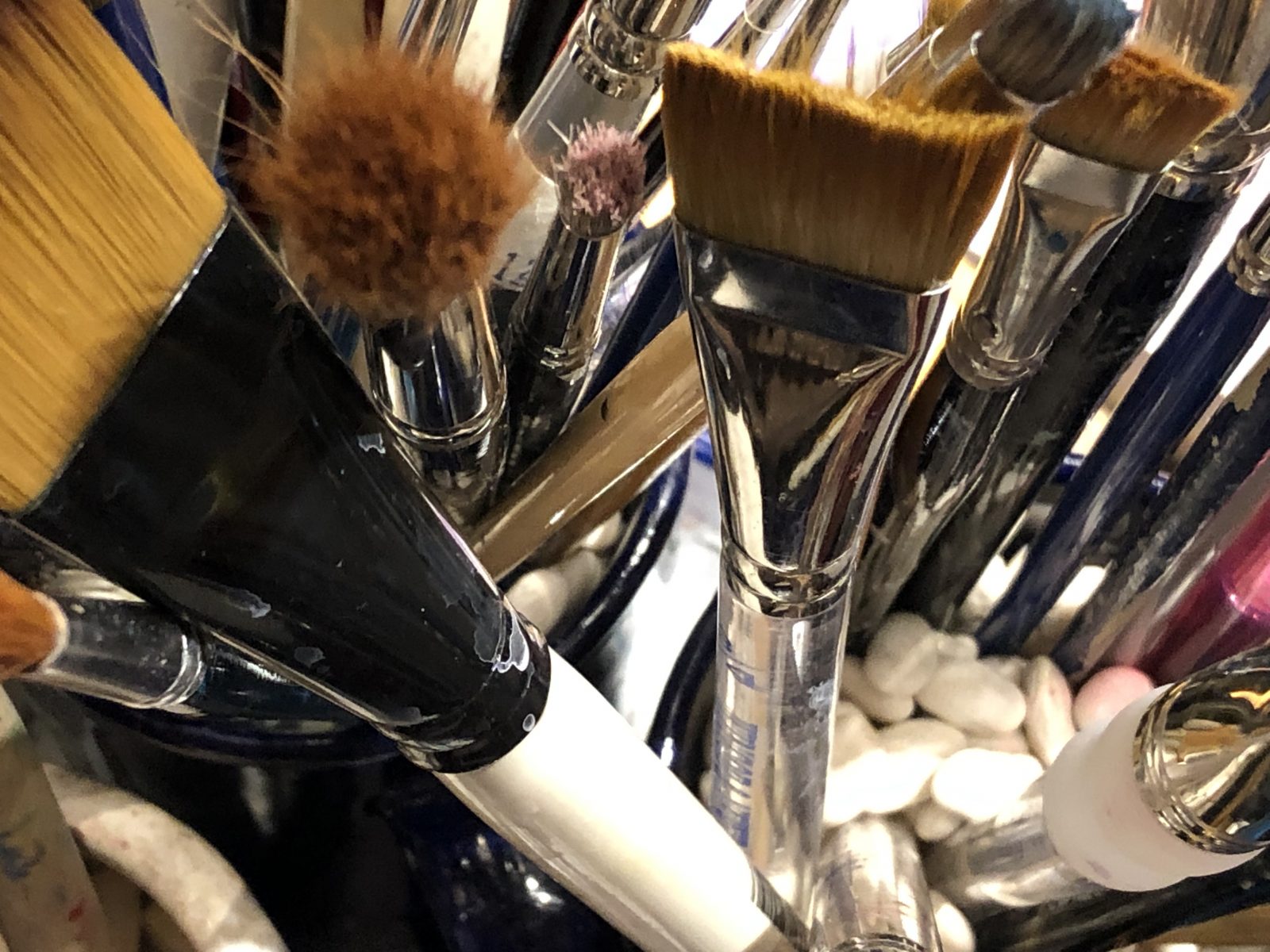
How do I choose?
First think of what you want to paint.
What medium seems to fit your idea? Follow up by experimenting with one that would be best. It can be a combination of several media or just one. Do a rough painting sketch of the main forms but no details. What color would be best for the main idea or what we call the center of interest?
I do a lot of Mixed Media with acrylics, meaning I might add a paper and collage it on or I might tear up an old painting I do not like, and use the pieces. I think of the style I want to express my idea. Will I use strong outlines? Or smudge the outlines for a filmy look? Be sure to overlap shapes. Don’t leave space around each one have them tough or overlap so the composition flows and there is a sense of direction to move around the artwork.
You are like a symphony director. You need to tell people how to move around your art.
When I select my colors, I consider the art elements like LINE, SHAPE, FORM, TEXTURE, VALUE, COLOR, SPACE (or dimension). My best work uses texture, color and value. Will my texture be real and tactile so that I touch it and feel it? If so, I would choose heavy gels or heavy gesso (pronounced jes-O) to raise up the canvas or paper surface before I paint. If I want the texture to be visual, I will paint the texture into the art.
Because I have been painting for half a century, I am very familiar with the interactions of colors so I try not to mix ones that will make my painting muddy. Is you use a color wheel and do not mix the colors opposite each other unless you really want a gray-brown neutral.. However, I will use opposites, called complements, to dull a too bright color.
For starters, pick 4 colors you seem to use most of the time. Restrict your painting to only those colors and make several sketches with a thin brush. My favorite four are yellow-orange, Golden Quinacridone crimson (or a cool red), Golden turquoise blue and a. blue-violet. Actually if you look at the color wheel, my colors are called a split-complementary color scheme.
https://www.google.com/search?client=firefox-b-1-d&q=color+wheel
Here is a link to several kinds of wheels. Look for the primary triad- red, yellow and blue. Look at yellow orange and blue green. Then find the red and blue. What are the colors on the other sides of red and blue? Try using those with the yellow-orange and blue-green. Paint a bunch of squiggles in each color all over the paper. Allow some to overlap to see what happens. Do you think they complement each other? In other words, do they ‘pop’ when you use them together? This is what you after.

©2018 Marsh Gegerson, High Sierra, Watercolor, 15×17″ $700.
Look at my painting above. I used a split complement scheme. yellow-orange, red, blue-violet and turquoise or blue green. They seem to enhance each other.
Find your colors, your style by using a few of the art elements and make several paintings.
Don’t use them all. Pic two or three. For instance, try outline (line) and shape ( geometric and free form shapes) then add space by overlapping some and leaving one or two alone. Play with it. Don’t get serious about it. Be spontaneous. It will come and soon you will have YOUR style.
